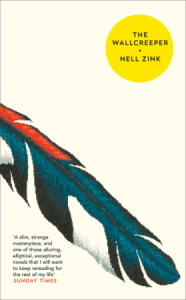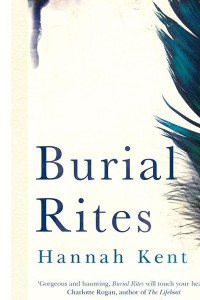Hannah Kent’s “The Good People”
Australian writer Hannah Kent’s second novel The Good People is about three women – Nora (Honora Leahy), Nance (Anne Roche) and Mary — in early nineteenth century rural Ireland, County Kerry. Nora was recently widowed who had been left the care of her four-year-old grandson, Michael Kelliher. A wild, crabbed child no heavier than the weight of snow upon a branch. A clutch of bones rippling with the movement of wind on water. Thistle-headed. Fierce-chinned. Small fingers clutching in front of him as though the air were filled with wonders and not the smoke of the fire and their own stale breath. The constant attention he demanded accompanied by his shrill needfulness exhausted Nora. She decided to hire a young girl to help her on the farm but be the primary caregiver to Michael. Fourteen-year-old Mary Clifford, tall and thin-faced, used to minding children having looked after her eight siblings agrees to work. She does the household chores and looks after the grandson.
When Nora’s husband, Martin, died suddenly while digging ditches Nance made an unexpected appearance during the wake to keen. Her entrance had been met with silence as none ever imagined she would show up at the cottage but she did.
Nance had never become accustomed to the way conversation stopped in her presence. It was one thing to enter a wake house and have the company fall into respectful silence It was another to move through a crowded yard in the pricked air of others’ wary regard and to hear laughter at her back. They made her feel like nothing more than a strange old woman plucking herbs, her eyes clouded with age and the smoke of her own badly-fired hearth. No matter that some of these men came to her with their carbuncles and congested lungs, or lay their wheezing children by her fire. In the broad light of day, amidst the noise of industry, their stares made her feel scorned and feeble.
Nance lived alone up in the hills close to where the Good People lived– Piper’s Grave, where the fairies dwelt. She was considered to have knowledge and magical powers that could help cure people of ills. Sometimes, in the company of suffering, Nance felt things. Maggie [ her aunt] had called it an inward seeing. The knowledge. Sometimes as she guided babies from their mothers and into the world, she sensed what their lives would be like, and sometimes the things she sensed frightened her.
Martin would care for his crippled grandson gently and be empathetic towards his condition but his wife had little time. Their daughter Johanna died leaving her son in the care of her husband, Tadgh. After a while unable to care for Michael, Tadgh left the child in the care of his maternal grandparents. After Martin’s death Nora became convinced that the Good People had taken away her real grandson and in his place left this cretin, a changeling. Soon instead of referring to him by his name she began referring to him as “it”. Nora first took him to Father Healy for healing but when he refused she took him across to Nance hoping she could help recover her true grandson— as she remembered him at the age of two laughing and playing. Despite Mary’s misgivings the two older women decided to “put the fairy of out of it”. During the treatment (which included administration of foxglove juice notorious for slowing down heartbeat) Mary was worried about the child and of the repercussions but did not stop the women. Once it was evident the treatment was clearly not going the way expected Mary ran to the neighbours and gave an account of the events. From there on it happened quickly as witnessed by the community. When they spotted the police returning from Nance, they wondered whether all three had been in league with the fairies, blinking the valley and thinning the butter in the churns, killing animals for devilment. Setting piseogs [ superstition] against the priest. It did not take long. By sunfall the valley was humming. An accusation had been brought against Nora Leahy, Mary Clifford and Nance Roche. The fairy cretin Nora had hidden from sight had been drowned in the river, and they were calling it murder.
The Good People is set in 1825-26 just before Catholic Emancipation, a process in Great Britain and Ireland that involved reducing and removing many of the restrictions on Roman Catholics. The most significant measure was the Roman Catholic Relief Act 1829, which removed the most substantial restrictions on Roman Catholicism in the United Kingdom that had been imposed with Reformation. Hence in keeping with the intensified political campaign for Catholics the new priest, Father Healy, is far more strict about observance of church discipline and is not indulgent towards people like Nance who believe in the Good People or observe heathen rituals like keening at wakes. He preaches “We’re to be paying our pennies to the Catholic campaign, not to unholy keeners.” Later during a conversation with Nance he says, “The synod forbids professional keeners wailing at wakes as an unchristian practice. It is a heathenish custom and abhorrent to God.” To which Nance retorts “But the people here do be having a spiritual temper, Father. Sure, we all have faith in the things of the invisible world. We’re a most religious people.” Although Nance never attended Church on Sunday the village folk went regularly and she felt the impact. The parade of sickness to her door had thinned since Father Healy had preached against her. No doubt her patients concern for their souls was now greater than their anxiety over chapped hands or the fevers glittering through their children. Her days had emptied.
It is this space between reality, spiritual and mystical — inhabited by people even today –that Hannah Kent explores in her magnificent novel The Good People.While quoting W.B. Yeats in the dedication she says “When all is said and done, how do we not know but that our own unreason may be better than another’s truth?” As Nance’s aunt Mary had told her once ‘There are worlds beyond our own that we must share this earth with,…And there are times when they act on one another.” As with her award-winning debut Burial Rites, Hannah Kent’s second novel The Good People is historical fiction inspired by true legal events recorded in documents. As she says “This novel is a work of fiction, although it takes as its inspiration a true event of infanticide. In 1826, an ‘old woman of very advanced age’ known as Anne / Nance Roche was indicted for the wilful murder of Michael Kelliher / Leahy (newspaper accounts list different names) at the summer Tralee Assizes in Co. Kerry. Michael had been drowned in the river Flesk on Monday, 12 June 1826, and had reportedly been unable to stand, walk or speak.”
Despite being Australian Hannah Kent has chosen subjects of both her novels to be set in lands far away from what she is familiar with — Iceland and now Ireland. In the process she has shown extraordinary craftsmanship in creating incredibly marvellous stories. She discusses it in this podcast. As Graeme Macrae Burnet points out that The Good People can be a true example of crime fiction. In fact both her well-researched novels are structurally similar beginning with a traditional local ballad that captures a story relevant to the novel, being about women who are possibly headed to the gallows for a “crime” and by harking back to the past Kent comments on the present situation of women. Her fictional landscapes are inevitably set in periods before women’s rights were even recognised. Yet by raising issues of how challenging life can be for single women (whether by choice or widowhood) Kent highlights how little has changed in the twenty-first century. As Nance says “An old woman without a man is the next thing to a ghost. No one needs her, folks are afraid of her, but mostly she isn’t seen.”
Hannah Kent explores the grey area between logic and mysticism without intruding with an authorial voice and bearing judgement. To be impartial allowing the reader to create their own opinion of the case requires immense dexterity in creating the plot. The Good People confirms Hannah Kent as a talented master craftsman.
Hannah Kent The Good People Picador, an imprint of Pan Macmillan, 2017.




